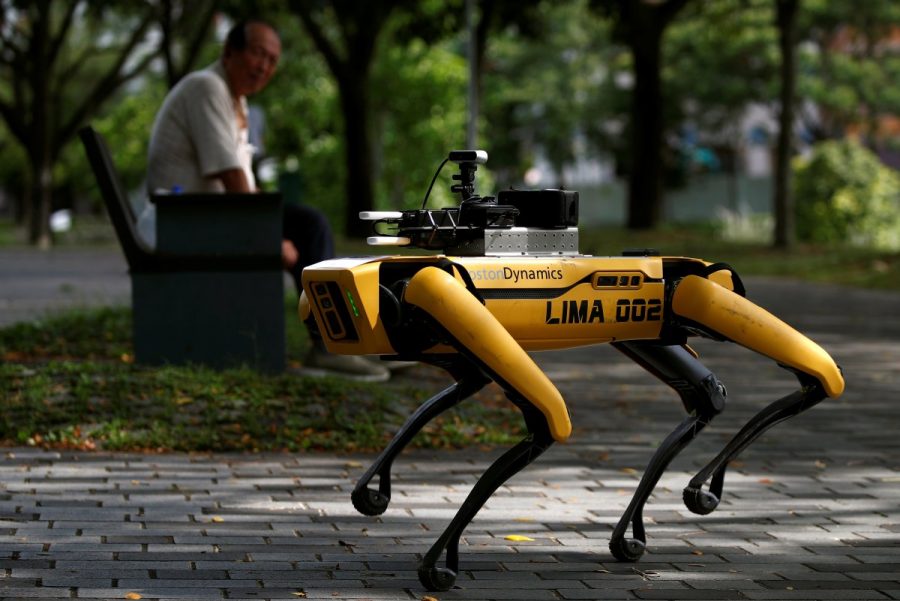Advanements in Artificial Intelligence and Robotics for Treatment of Corona
The phrase “social distancing” has taken on a new meaning in the age of Corona, and so have the methods employed by various governments to enforce such practices to mitigate the risk of transmission while carrying on in daily activities. A solution to such a complex multi-faceted problem has sparked innovation in the field of biomedical engineering such as the use of robotics and Artificial Intelligence (AI) have been employed to address these issues. Some of the most fascinating technological breakthroughs that have been introduced are the use of robotics and artificial intelligence to assist with patient diagnosis and treatment, minimally invasive surgical procedures and the enforcement of safety measures to limit the possibility for infection.
In terms of diagnosis, the use of digital devices such as thermal sensors and vision algorithms have enabled mass screenings of large numbers of people in public areas. One of the many risks frontline workers expose themselves to is that of testing a patient who is positive for COVID-19. The development of autonomous robotic systems to take care of nasopharyngeal swabbing drastically limits this risk. There has also been research into the use of robotic systems that use ultrasound imaging to identify the peripheral forearm veins to automate the process of drawing blood, a task otherwise done by phlebotomists.2 This automated venipuncture would allow samples to be collected to check for the presence of antibodies in people that may not be presenting any symptoms of the virus to determine if that individual was ever infected.
A Danish Robotics Company creates robots which use vigorous UVC lights that have the energy to kill the DNA or RNA of any microorganism that has been exposed to that surface. The benefit of this technology is the ability to destroy these pathogenic viruses without harming human tissue. The UV light is able to penetrate the virus due to its smaller size. This method is not a new concept as ultraviolet germicidal irradiation has been explored in the medical community as a way to disinfect the air. The robot is controlled with a computer and lidar sensors create a digital map of the area. LIDAR technology, which stands for light detection and ranging, allows robots to operate autonomously. This means that instead of being user controlled, the robots operate with their own navigation system, and have the ability to perform based on the changes, predictable or unexpected, in any given situation. In an article Evan Ackerman wrote to explain how this works he states: “The robot relies on simultaneous localization and mapping to navigate and operates on its own.” The strength of the 254 nanometer light that is ejected from the UV array is enough to destroy 99.99% of germs.
Tina Reed, a writer for Fierce Healthcare, introduced another example highlighting the extreme capabilities of this rapidly developing technology. She pointed out a procedure performed on a cadavers’ vocal cords by surgeons in Italy 10 miles from the operating site using a 5G network. Truly amazing!
As always, discovery is not something that happens overnight. It takes brainstorming, creativity, necessity, experimentation, then the cycle repeats. What this paper highlights regarding the use of robotics and artificial intelligence demonstrates the impact this technology has the potential to effect. From diagnosis and treatment to surgery and patient care, the boundaries the discussed devices and instruments have to extend beyond is quite remarkable. Robotics is a fast growing industry that has the potential to unlock a world of opportunity for the means by which we interact with one another, our environment, and given our current state, COVID-19. Of course, with all change comes criticism and analysis of the negative implications this technology could have. There are possibilities for robotic malfunction, inaccurate results, and from an economic standpoint the replacement of humans with robots to complete certain tasks. But speaking in terms of flattening the curve, the role robotics and artificial intelligence systems have the potential to play in patient care, telesurgery and the facilitation of everyday tasks could certainly be deemed a change for the better.


